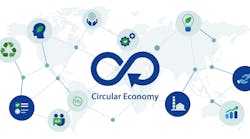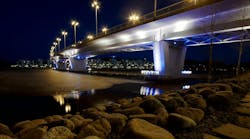What do you do as an encore once you’ve won a Nobel prize for an invention that turned LEDs into light sources for general illumination? If you’re Shuji Nakamura, you turn your attention to the Holy Grail of energy challenges: nuclear fusion.
An optical guru, Nakamura has quietly co-founded a company in Palo Alto, Calif., aiming to use lasers to crack the elusive goal of generating electricity by fusing atoms together rather than splitting them apart, as today’s fission reactors do.
Fusion in principle portends a relatively limitless supply of energy because its main ingredient is hydrogen, the most abundant element in the universe. The process does not yield hazardous waste the way fission does. And compared to fission, radioactivity levels are low.
That is not to say it is hazard free. But since the 1950s, energy experts have looked forward to the day when fusion is finally ready to roll. Renowned physicist Stephen Hawking once said, "I would like nuclear fusion to become a practical power source. It would provide an inexhaustible supply of energy, without pollution or global warming.”
The problem has been getting it to work. Fusion’s arrival has remained well in the future for over 60 years now. Many hurdles remain including extracting hydrogen. But the most fundamental of all the impediments is that the amount of energy that comes out of a fusion reaction is nowhere near the level it needs to be. In almost all projects under development, the energy that goes into a reaction is more than what emerges. In technical speak, the “gain” is below one.
Although the U.S. government’s National Ignition Facility (NIF) in Livermore, Calif., produced a gain of 1.5 last December using lasers, the reaction was over in a flash. It was not the sustainable sort needed for a reliable power source. The NIF lasers fire in single shots, not continuously. Equally notable, experts believe that the gain will have to be more on the order of 100 or 200 — a big leap from 1.5 — if NIF-style fusion is to be economically viable as a power source. (News broke this week that NIF has now replicated last December’s one-plus success, although details have not yet emerged).
The fusion club is growing
The good news for the world’s energy future is that more outfits than ever are working on fusion. Not too long ago, only a handful of government entities were chasing it, applying one of two approaches. NIF’s technology zaps a small pellet of hydrogen isotopes with 192 lasers that ricochet a mile to their target. Alternatively, the tokamak approach contains the hydrogen isotopes in a giant plasma contained by superconducting magnets. It is most associated with the giant multi-government ITER facility under construction in Cadarache, France.
Over the last decade or two, many venture-backed companies have thrown their hats into the ring, in many cases deploying novel designs, not just the “traditional” laser or tokamak methods — although they tend to draw on those. For example, in 2011 Amazon chairman Jeff Bezos invested in a Vancouver area company, General Fusion, which is developing what it calls magnetized target fusion.
Nakamura’s Blue Laser Fusion is perhaps the newest addition to the roster of fusion companies. Japan’s Nikkei Asia reported three weeks ago that the scientist co-founded Blue Laser Fusion last November. The article also reports that Blue Laser has raised $25 million “from venture capital firm JAFCO Group and the Mirai Creation Fund, which is backed by Toyota Motor and other investors and managed by the SPARX Group.” Nakamura’s co-founder and head of technology is Hiroaki Ohta, a former president of Tokyo-based drone maker ACSL, Nikkei states.
One of Blue Laser’s defining characteristics is that rather than fuse two isotopes of hydrogen known as deuterium and tritium, it will work with boron, according to the article. The story does not state whether Blue Laser will also use hydrogen. While deuterium-tritium is more common in fusion circles, other outfits are developing hydrogen-boron fusion, also known as “aneutronic fusion,” using standard hydrogen (which does not have a neutron) and boron. Hydrogen-boron tends to yield electricity as a direct output, rather than create heat to drive a turbine to generate electricity.
Continuously firing lasers
What is clear is that Nakamura, the man steeped in the science of light and who is a professor of electronic and photonic materials at the University of California Santa Barbara, will apply lasers to trigger fusion.
"Our goal is to commercialize fusion power with a highly safe method that can be tested repeatedly, using our knowledge of semiconductor lasers," he told Nikkei. "We want to contribute to solving the world's energy problems.”
Blue Laser intends to use continuous, rapid-fire lasers to sustain the fusion reaction.
The company is at least the second laser outfit that Nakamura has co-founded since moving on from LEDs. He co-founded Goleta, Calif.–based SLD Laser in 2013 as a spin-out from his LED company Soraa. SLD is now called Kyocera SLD Laser following its acquisition by Japan’s Kyocera in January 2021.
Before focusing his commercial attention on lasers, Nakamura plied his trade in another photonic technology, LEDs, having founded violet-LED specialist Soraa in 2008.
On the LED front, he is best known for sharing the 2014 Nobel Prize for physics with two other scientists, Isamu Akasaki and Hiroshi Amano, for their early 1990s work on blue LEDs, which helped usher in LEDs in as general illumination sources.
Now, as a laser enthusiast, the 69-year-old is focusing his commercial efforts on energy rather than on lighting per se.
Blue Laser Fusion will work with Toshiba Energy Systems & Solutions, a supplier of turbines for nuclear power plants, and YUKI Holdings, a Tokyo-based precision metal processing company, according to Nikkei.
“The goal is to have a reactor capable of generating 1 gigawatt of electricity, equivalent to about one atom-splitting nuclear reactor, in operation in either Japan or the U.S. by 2030,” the article states.
That’s an ambitious timeline considering the more than six decades that have passed without anyone getting anywhere near that goal. If Nakamura gets there, it would be a crowning achievement in an already heralded optical career which has consistently entailed the solid-state manipulation of light.
MARK HALPER is a contributing editor for LEDs Magazine, and an energy, technology, and business journalist ([email protected]).
Follow our LinkedIn page for our latest news updates, contributed articles, and commentary, and our Facebook page for events announcements and more. You can also find us on Twitter.






